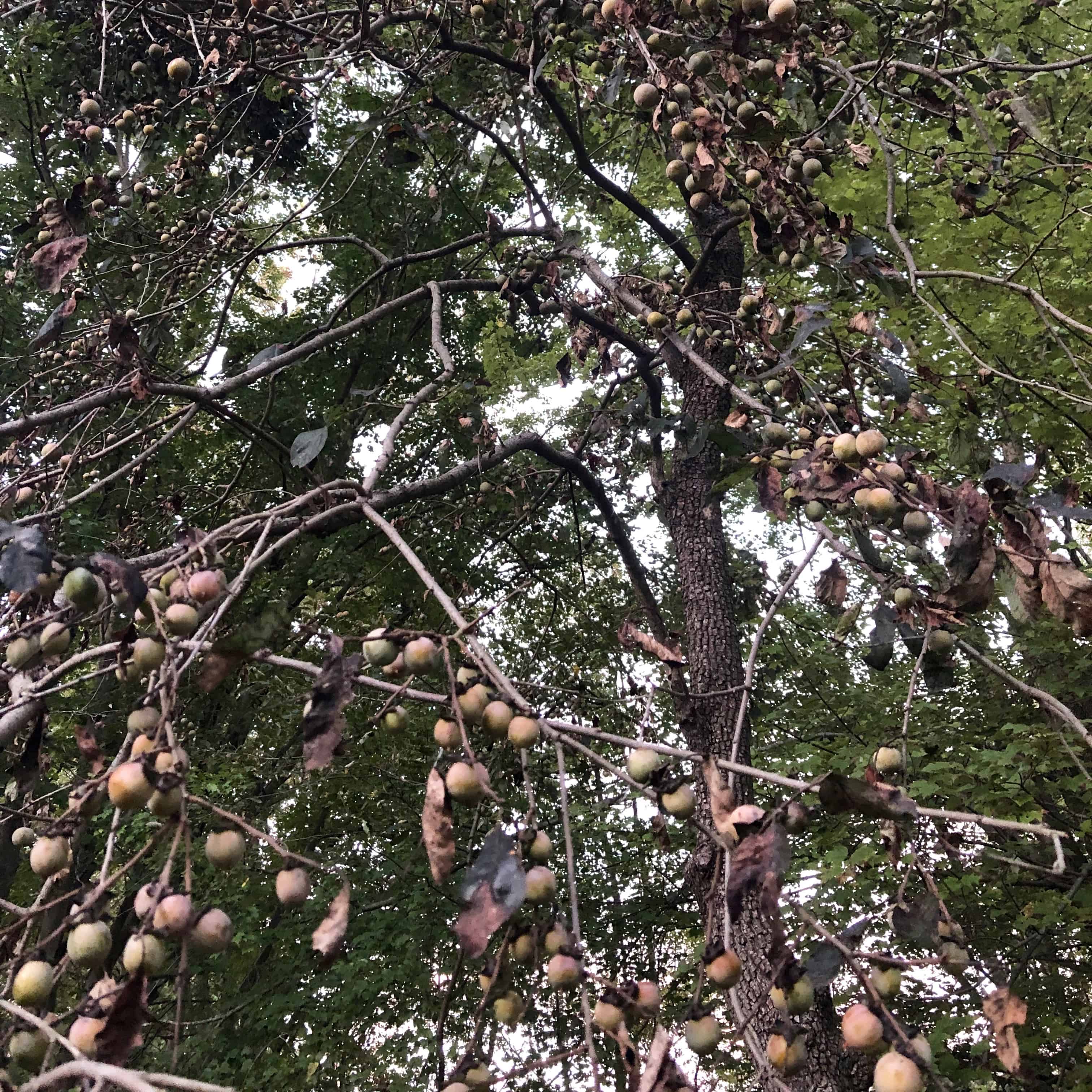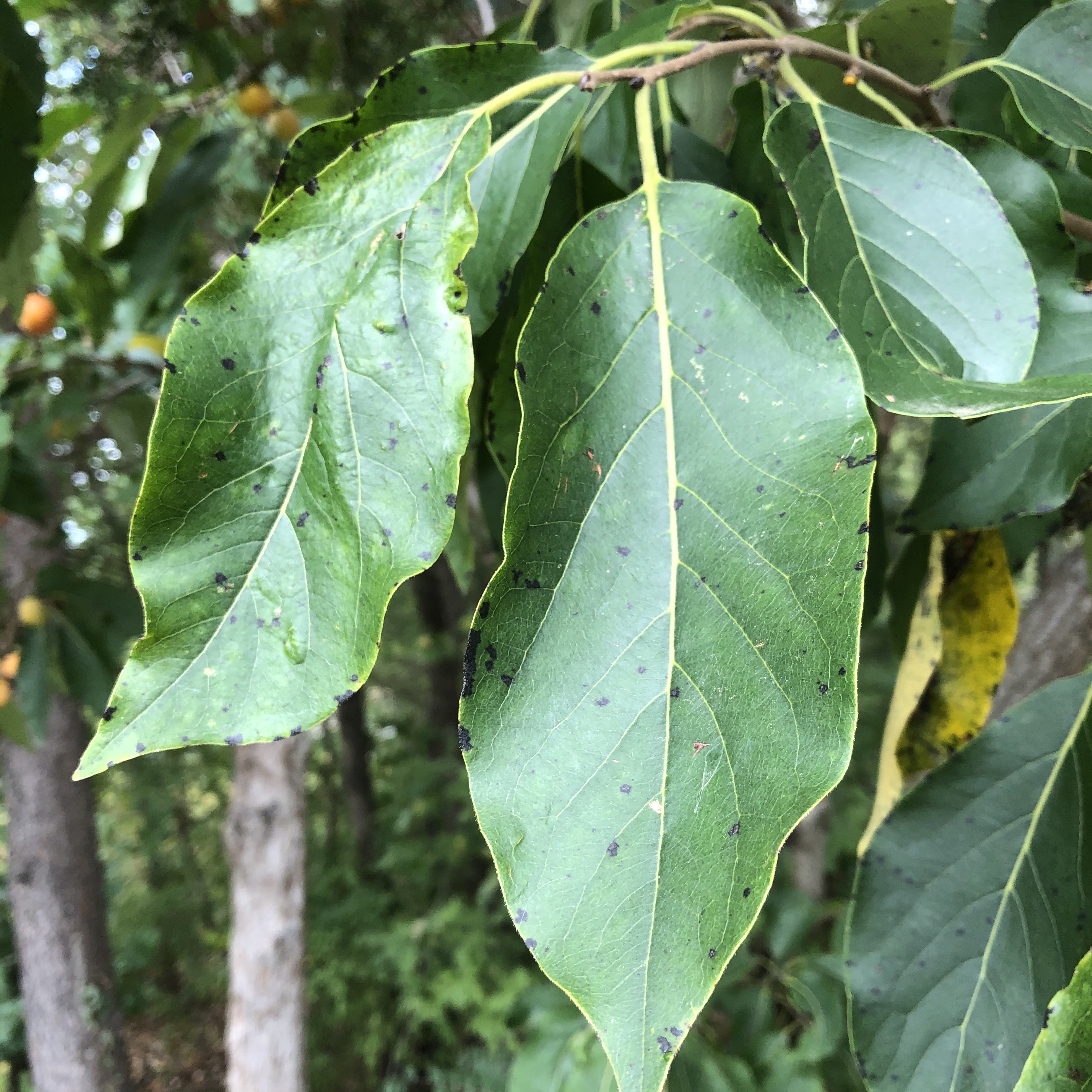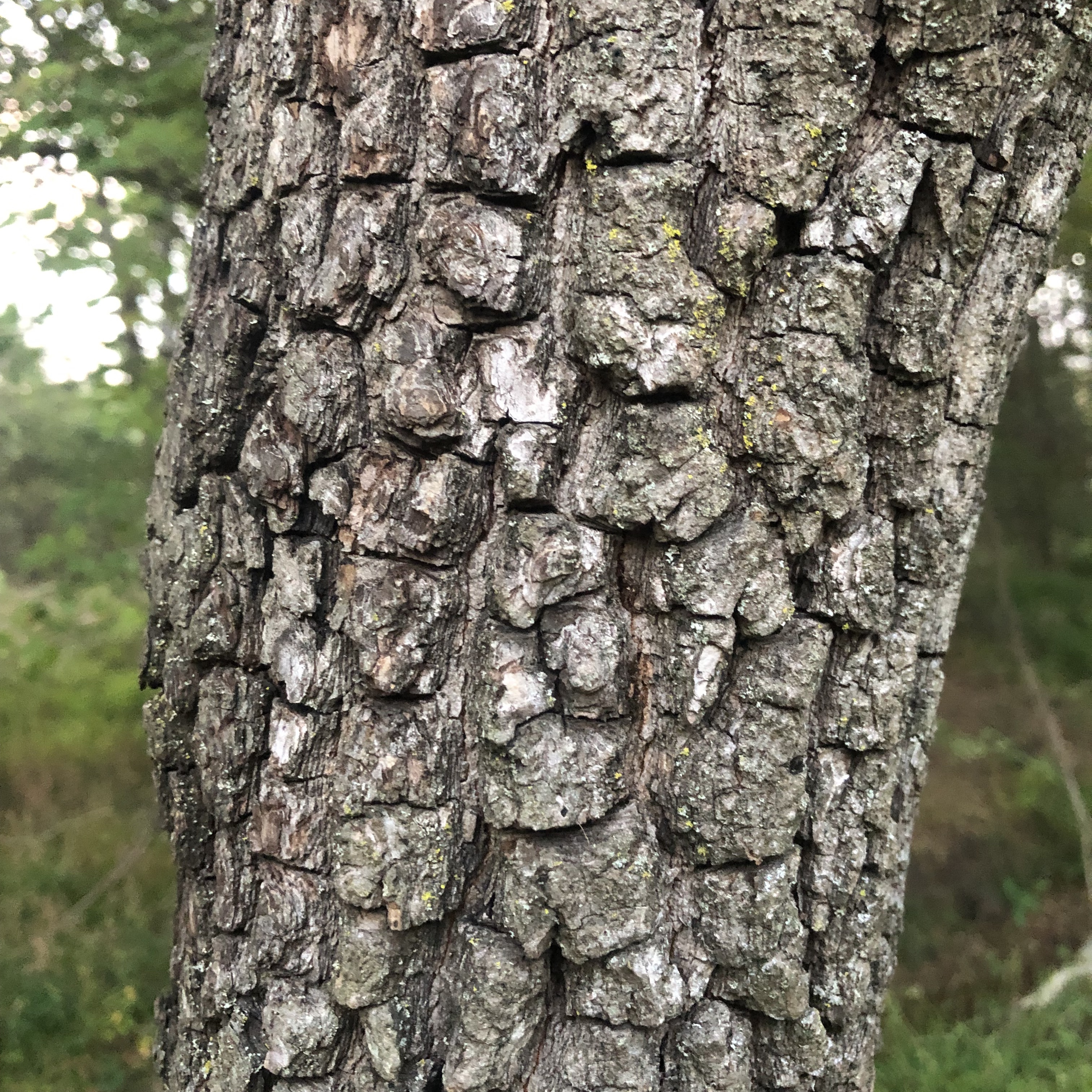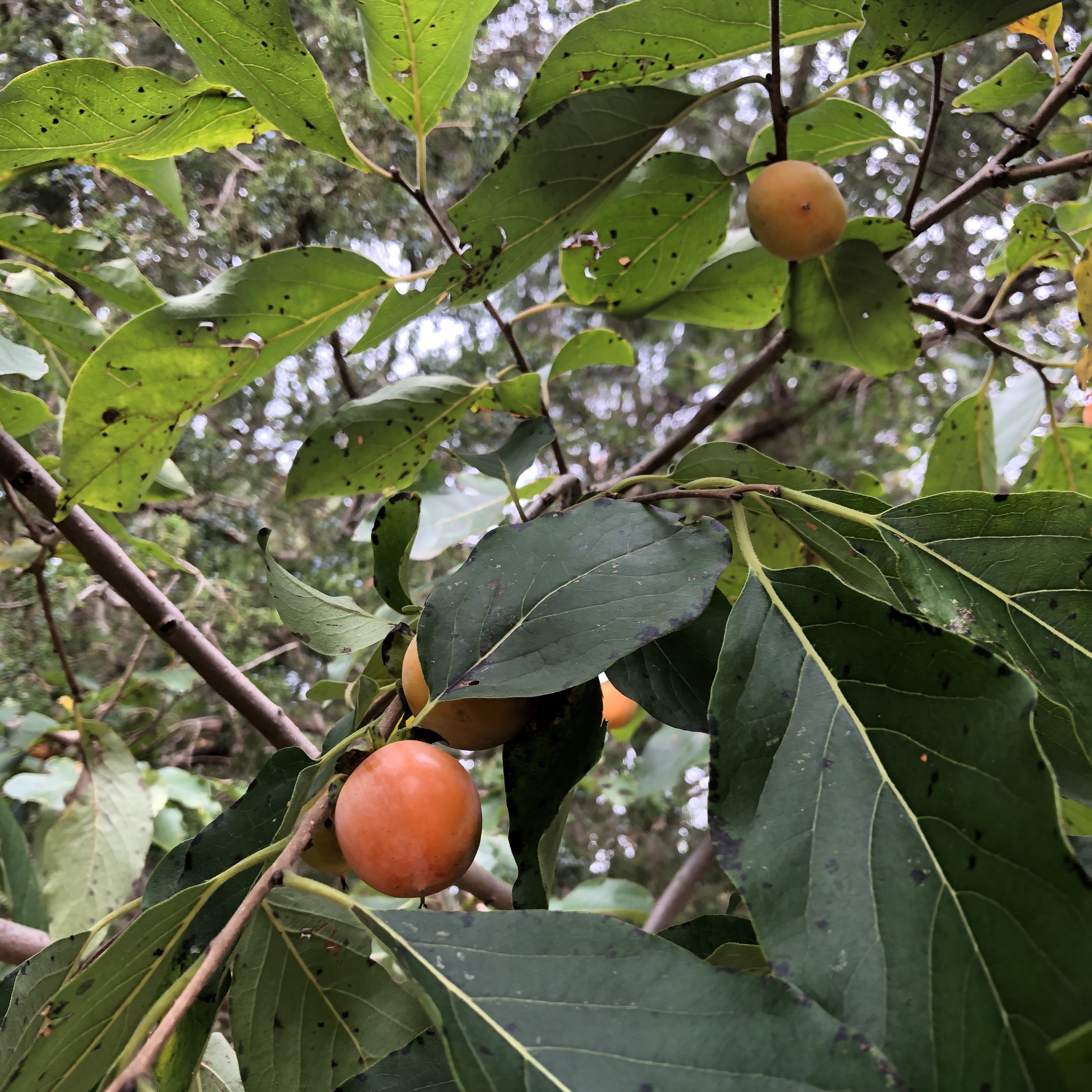Fall brings colorful leaves, cooler temperatures, and shorter days. It also brings the persimmons! When I saw my first persimmon tree, I thought that they were an anomaly. When I started being more observant, I realized that persimmon trees are pretty common. They are really easy to spot in the fall because of their fruit. You can find them in the southern United States through southern Illinois. Although I rarely hear anyone saying that they are eating a persimmon, according to one resource, they are one of the most widely planted trees in the world. Asia boasts the most acreage of persimmons trees.
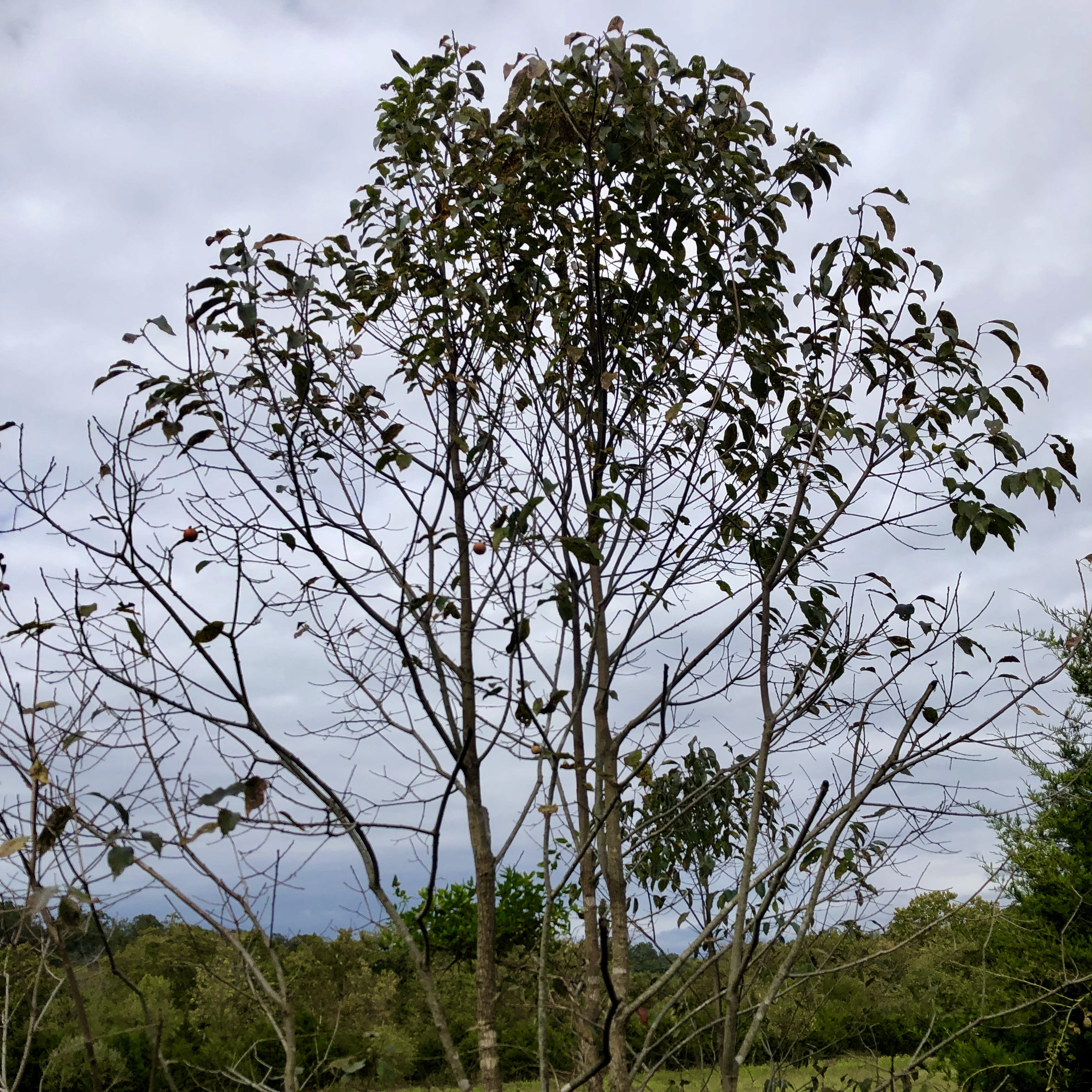
Size and Growth Patterns
Trees range in size from 20-60 feet tall. They are slow growers, and as a result, larger ones are more difficult to find. They like full to partial sun, so they are usually found along the edges of tree lines. Interestingly, they are tolerant to black walnut toxicity and a variety of soil conditions.
Many nurseries carry persimmons trees. Plant them strategically. The rotting berries make quite a mess.
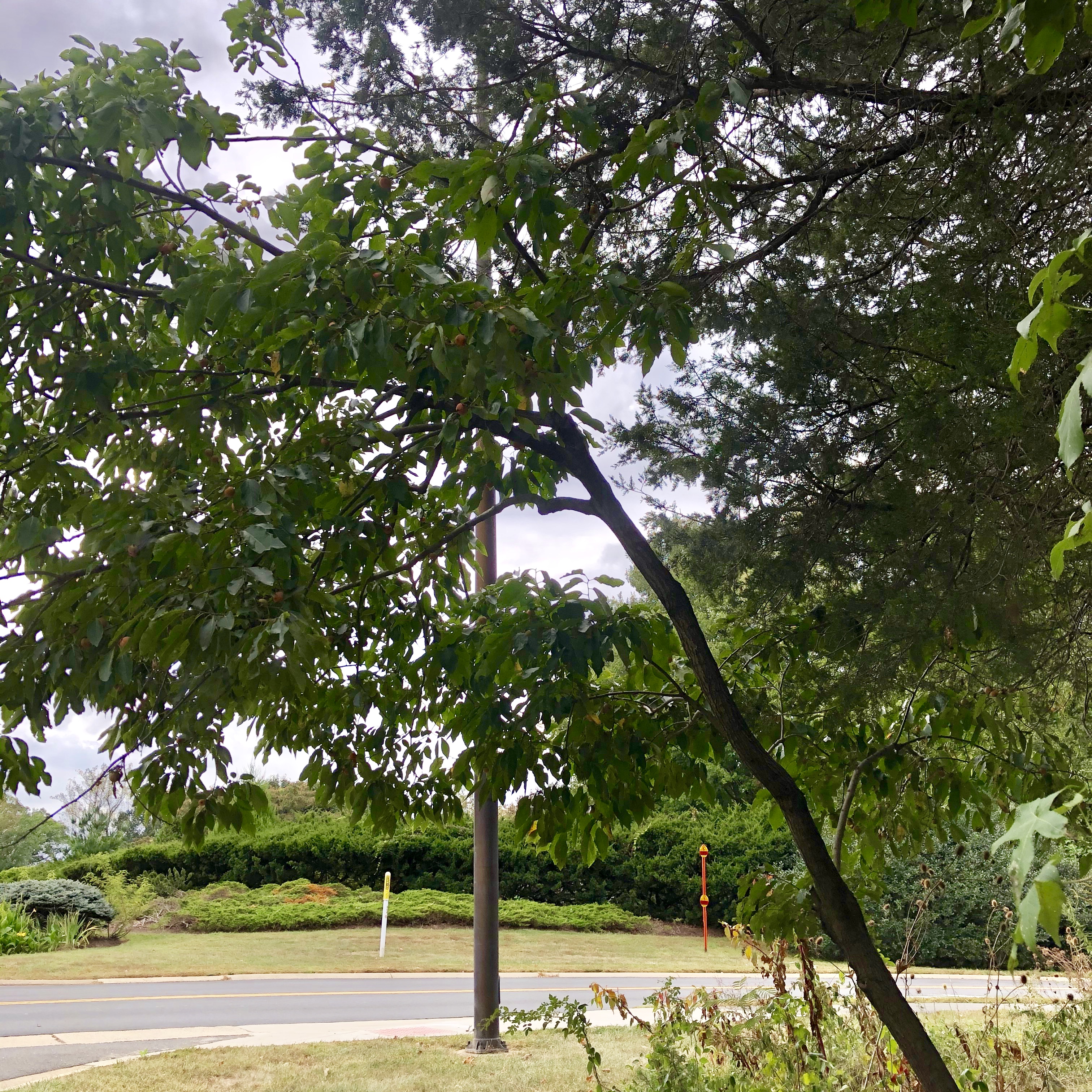
Persimmon Fruit
There are separate male and female trees. Both produce creamy white flowers in the spring. In the fall, female trees produce orange berries that are about 1” in diameter. The berries, which don’t really look like berries, are edible. When ripe, they are sweet with lots of seeds, similar to a paw paw. Persimmons must be fully ripe, otherwise the alum in the fruit makes your mouth pucker. One berry has 27% of the RDA for vitamin C.
Persimmons in Great Falls, VA
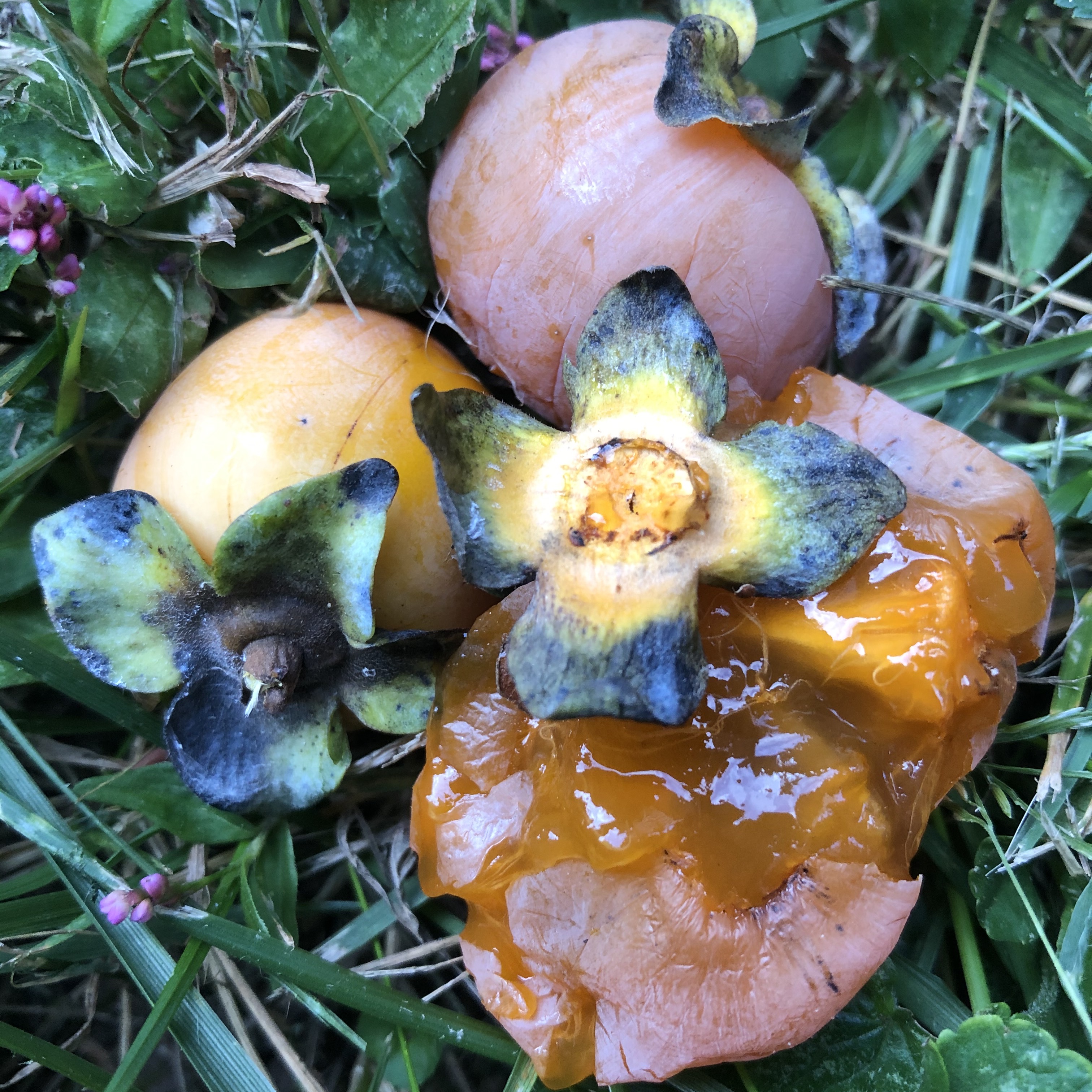
Final Thoughts
Wild persimmons are much smaller than the ones in the grocery store, but they also don't have pesticides and harsh chemicals on them. Try one and see if you like them! Maybe even bake something.
